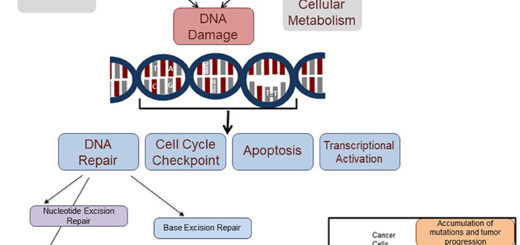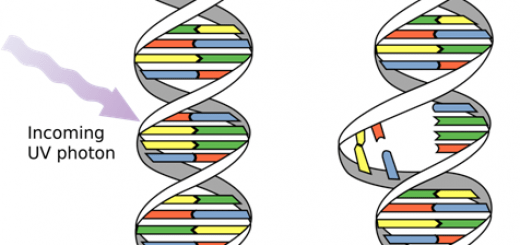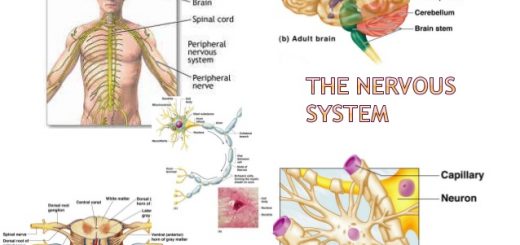Cloning of DNA sequences, Importance of recombinant DNA and Uses of human genome
DNA Sequence for cloning may be obtained by two ways: using mRNA and Separation of DNA sequence from the genome of the cell, where the cells are broken up and the entire genome is cleaved by the restriction endonuclease enzymes, A mammalian genome that is treated in this way may produce millions of DNA fragments, These DNA fragments are spliced into plasmids or phases and cloned.
Using mRNA
It is the best way that takes place, as follows:
- Isolate mRNA from some cells in which the gene of interest is active, for example, cells of the pancreas that produce insulin and the precursors of red blood cells that produce hemoglobin because there is a great deal of mRNA that carries the message necessary to make these proteins.
- The mRNA is used as a template to make a complementary strand of DNA by using “reverse transcriptase enzyme”.
- Another single strand of DNA is built which is complementary to the synthesized DNA strand by using the DNA-polymerase enzyme, So, we can obtain a double-stranded DNA that can then be cloned.
The reverse transcriptase enzyme is produced by viruses containing RNA genomes as they use it to convert their own RNA genomes into DNA that can be joined to the host’s DNA genome to ensure their replication.
Ways of cloning DNA sequences (clone a gene or a part of DNA in two ways):
Using the plasmids or phages
- Isolate the gene or a piece of DNA of interest and treat it with a restriction endonuclease enzyme that leads to cut it, forming sticky ends.
- The plasmids are isolated from the bacterial cells and treated by the same restriction endonuclease enzyme to recognize the same sites and cut at them, leaving the same sticky ends.
- When the pieces of DNA and plasmids are mixed, some of the plasmids’ sticky ends will base-pair with those of the desired gene (sticky ends of DNA) and the two can be joined together by the DNA-ligase enzyme.
- The prepared plasmids are added to a culture of bacteria or yeast cells which have been treated to make them more permeable to DNA, where some plasmids are taken up by the cells and during the division of bacterial or yeast cells, the plasmids are replicated along with their genome.
- Cells can be broken up and the plasmids are recovered by treating them with the same restriction endonuclease enzyme to release the cloned gene from the plasmid.
- The genes and plasmids can then be separated by differential centrifugation to get a sufficient quantity of identical DNA fragments which can be analyzed to determine their nucleotide sequence or treated to be transplanted into another cell.
Using PCR machine
The polymerase chain reaction (PCR) is capable of replicating many thousands of copies of DNA in a few minutes by using the “Taq polymerase enzyme” which works at high temperatures and this technique is used nowadays.
Recombination DNA
Recombination DNA is the introduction of a part of DNA from one organism into cells of another organism, Some scientists imagined a time when we will be able to introduce copies of normal genes into human beings whose genes are defective, thereby preventing much suffering and eliminating the need for the treatment of the genetic deficiencies by the medicines.
The practical applications of recombinant DNA (importance of the recombinant DNA):
In medicine
The production of useful proteins on a commercial scale:
Production of protein-human insulin (insulin hormone) to treat diabetic patients:
- Insulin is produced by cloning its gene with the plasmids inside the bacterial cells, then it will become bacteria-grown insulin.
- Although the human insulin that is produced by the recombinant DNA technique (in the bacteria) is expensive, it is better for some patients who can’t tolerate the slight differences between the human insulin and that is extracted from the pancreas glands of pigs and cattle by a long and expensive process.
Production of interferons:
- In the body, interferons are made and released from virus-infected cells, thereby protecting the neighbouring healthy cells, because of their ability to stop the replication of the viruses ( particularly viruses containing RNA genomes such as those that cause influenza and poliomyelitis).
- During the 1970s, medical interferon was laboriously extracted from human cells, and so it was scarce and very expensive, In 1980s, a drug company researchers have introduced 15 human interferon genes into bacterial cells, Thus, relatively abundant and inexpensive interferons are now available.
- It was believed that interferons can treat some types of cancer, but the preliminary studies using interferons to treat cancer have been disappointing, and this may be due to the technical problems that can be overcome later.
In agriculture
The agricultural researchers will probably soon be able to:
- Introduce genes for resistance to herbicides and important diseases inside the crop plants.
- Isolate and transplant the genes (that enable the members of legumes to house nitrogen-fixing bacteria on their roots) into the other crop plants can’t house this type of bacteria, If we can transplant the relevant genes into other crop plants and set them up with bacteria, it would eliminate the need for the nitrogen fertilizers, These fertilizers are expensive to produce, apply and often contribute to the water pollution in the agricultural areas.
In experiments and research
Researchers were able to:
- Transplant ruby-red eyes gene from a strain of fruit flies (Drosophila) into cells that are destined to become the reproductive organs in the embryos of another strain, when the embryos grow up, they passed on the transplanted gene which endowed their offsprings with the ruby-red eyes instead of the brown eyes.
- Introduce a gene of the growth hormone from rats or humans into mice which have grown to twice their normal size, and also they passed this gene to their offsprings.
Dangers of recombinant DNA
Although recombinant DNA is important in many fields, many people are worried about what will happen, if there is a sudden accident (it has many dangers), Because it is supposed that a strain of bacteria with a gene of a dangerous toxin would be let loose in the world, Many workers feel that the chance of this happening is slight.
Although the bacterial strains used in many recombinant DNA experiments are Escherichia coli which is a species universally found in the human intestine, the actual strains used in the laboratory have been out of contact with the real bodies for thousands of generations, They have evolved in such a way that they can no longer survive outside their test tube homes.
Human genome
In 1953, Watson and Crick proved that genes are double helix of DNA, In 1980, the idea of the genome appeared and the number of human genes that were identified by the scientists was about 450 genes.
In the middle of eighties, the number of human genes was doubled three times to be 1500 genes, Some of these genes were the causative of the increase of cholesterol in the blood (one of the causes of heart disease) and some of them are causing cancer disease.
Scientists discovered that there is about “60,000: 80,000” genes in the human body that exist in 23 pairs of chromosomes and the complete set of genes are known as “human genome”, where only half of these genes are discovered till now.
Human genome is the complete set of genes that found on chromosomes of the human cell, Chromosomes are arranged according to their sizes from number (1) to number (23), the chromosome (X) is not a part of this arrangement, as it follows the chromosome no. (7) in size, but it is arranged at the end of the chromosomes and has the no. (23).
Examples of genes which their location was determined on the chromosomes in the human:
- Fingerprint gene on chromosome no. (8).
- Blood groups genes on chromosome no. (9).
- The gene that is responsible for the formation of insulin & the gene that is responsible for the formation of hemoglobin on chromosome no. (11).
- Colour blindness gene & Hemophilia gene on chromosome no. (23).
The uses of the human genome
- Identifying the genes which cause rare and common hereditary diseases.
- Identifying the genes which cause the disability of some organs to perform the vital activities of the body.
- Preparing drugs without side effects in the future.
- Studying the evolution of living organisms by comparing the human genome with the genomes of other living organisms.
- Improving the offsprings by identifying the defected genes of the fetus before he is born and how to be cured (gene therapy).
- Identifying the characters of any human on Earth by analyzing his hair (somatic cell) or sperm to know his genome, thus we can draw a complete picture of his features.
Molecular technology (Genetic Engineering) advantages, Techniques and uses
Importance of Nucleosides, Nucleotides, Purines, Pyrimidines & Sugars of nucleic acids
Regulation of the cell cycle, DNA synthesis phase, Interphase & Mitosis



